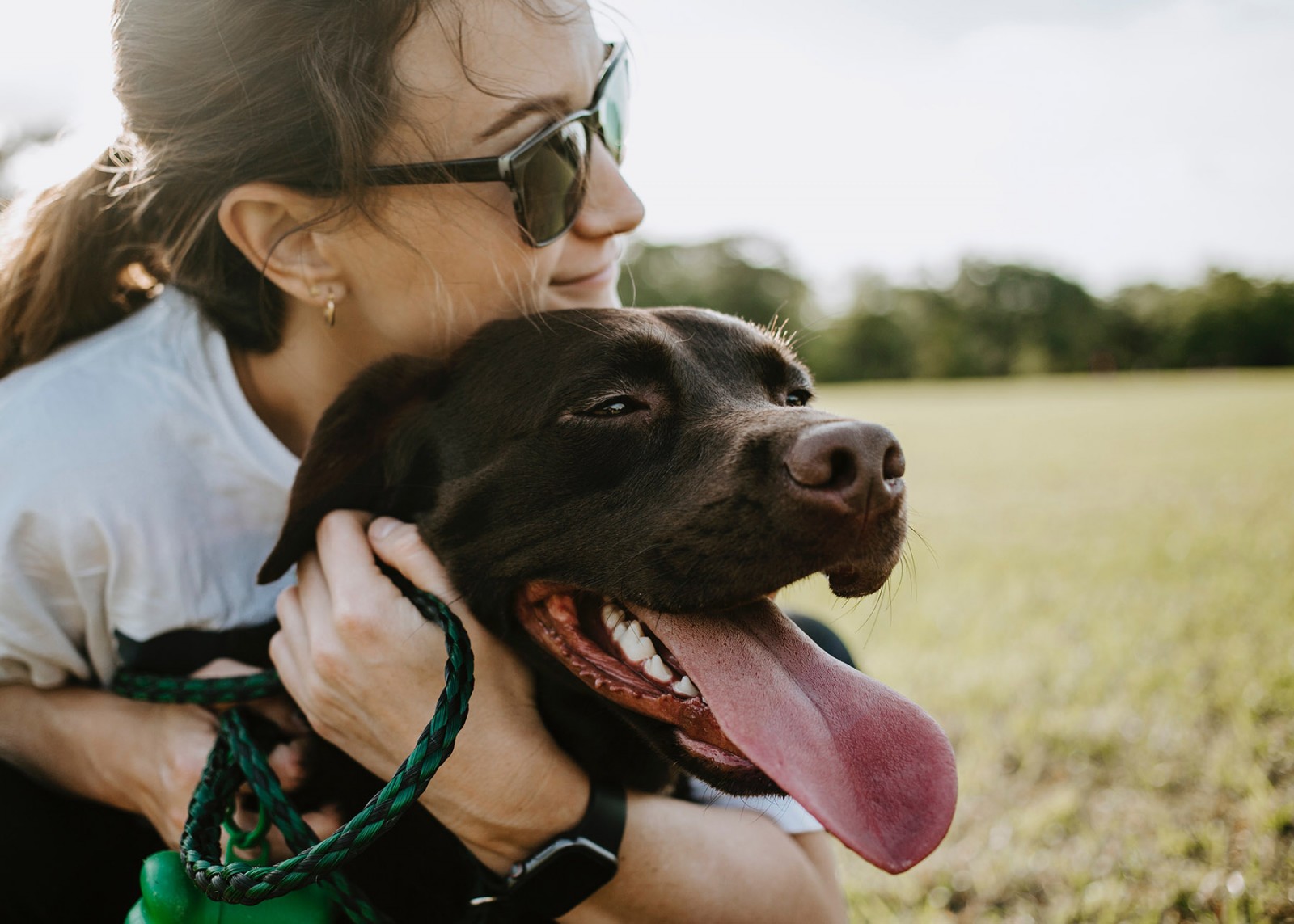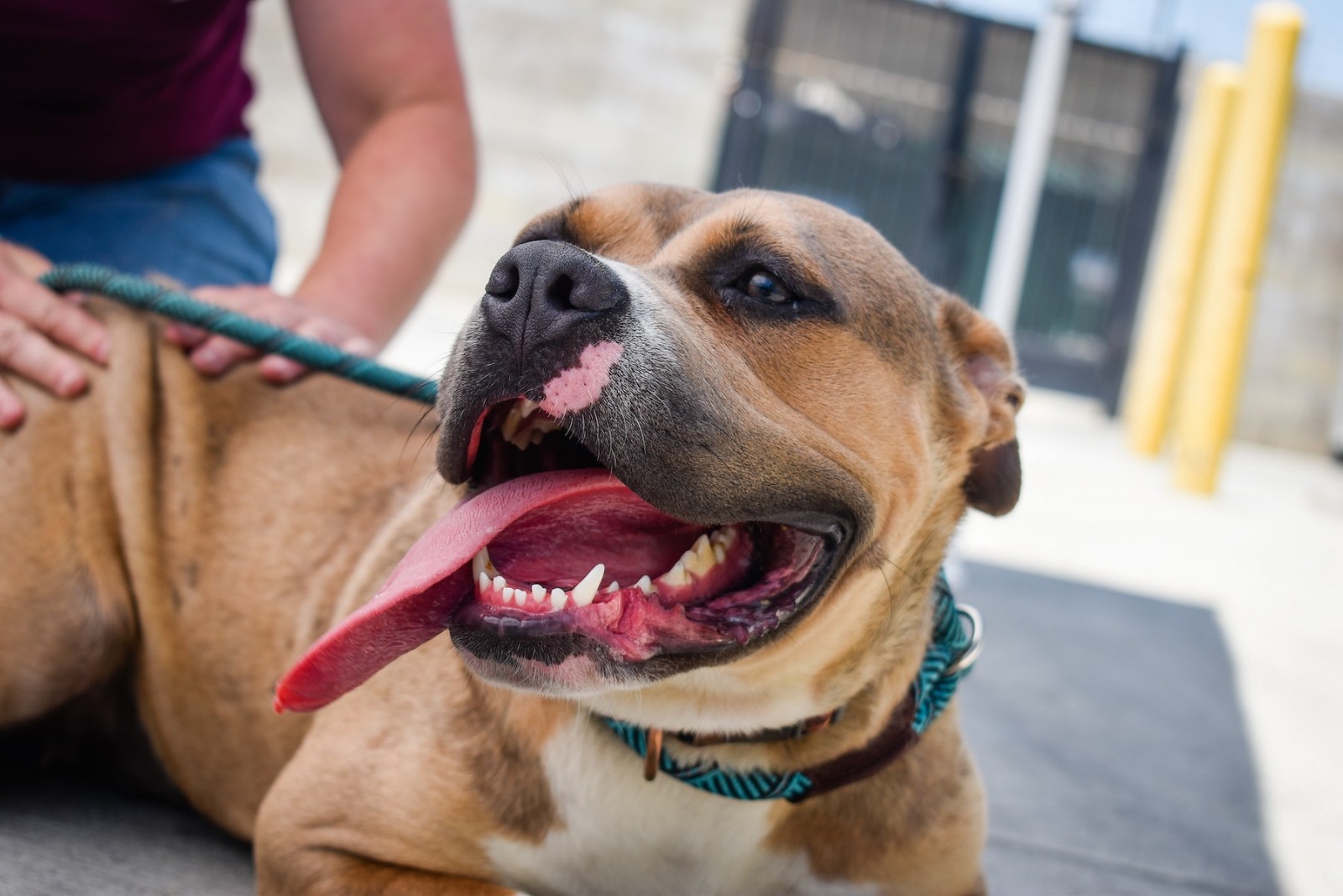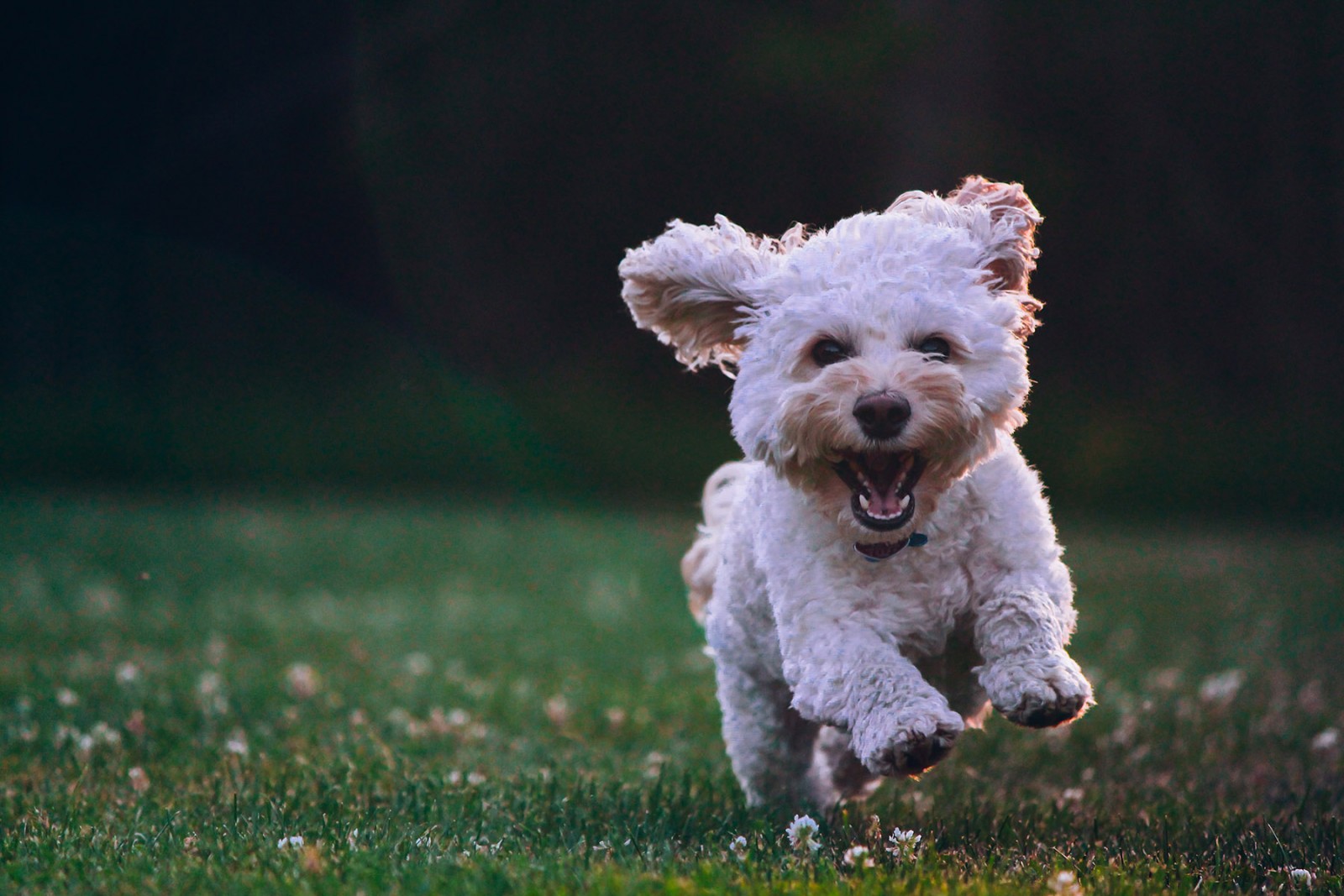Many dog owners regard their favourite four-footed companion as a member of the family. But we don’t always speak the same language as our dogs. Vet and behaviour specialist Tiny De Keuster, who has been a guest professor at Ghent University for ten years, separates the facts from the fiction.

1. Cats are solitary and selfish; dogs are sociable creatures
"It is true that cats are solitary hunters and therefore are not sociable like dogs or humans. But the ‘selfish’ label is rather more a human interpretation of natural behaviour. The average cat is a solitary hunter that has no need to live in a group. They eat alone, they go out alone, and not in groups. By nature, cats are afraid of new things, and they find new things a bit scary. If someone comes to visit you than usually a dog will come check them out straight away, but that’s rarely the case with cats. Instead they tend to hide or they just stay put and don’t show any interest. Cats can behave in a social way towards a few individuals (humans, dogs, or other cats), and they will rub against you with their head or let you stroke them, but they always choose when, and for how long. You could say that cats are the inventors of the ‘living-apart-together’ relationship."
‘Dogs are naturally sociable animals, and they are sociable towards humans. Moreover dogs have a dependent relationship with humans. They cannot do without us. In the past there were experiments were people tried to get dogs to live in a pack together without humans. But unlike wolves it did not work for dogs. They need a human presence in order to be able to function.’
‘Dogs are able to get attached to members of the family, but also to other dogs in the same family or even the cat. Well-functioning dogs become part of the family, and they love making new social contacts.’
‘You can even see the strong connection between humans and dogs in the hormonal balance in dogs and humans. Research has shown that the production of oxytocin, the ‘hugging hormone’ increases whenever dogs and humans look each other in the eyes. Oxytocin is the substance which is also responsible for the social bonds between humans, in particular the one between a mother and her baby.’
‘But can we really call this friendship? That depends on how you define friendship. From a scientific point of view, human relationships are based on three criteria, and these can also be applied to a friendship. It comes down to questions such as: ‘Am I satisfied’ and ‘How much do I want to invest in this?' We also weigh up our options: ‘What is the added value of this friendship as compared to another one?’ Research has shown that people use the same criteria to decide whether they will keep investing in a relationship with a dog. So from the human point of view it can definitely be seen as friendship.'
'But it’s a different situation for the dog. Dogs are dependent on the family they live with to provide them with everything they need such as food, drink, a place to sleep, activity, walks, or going to the vet. So, from this point of view you can compare the dog-human relationship with a parent-child one. Yet there is one important difference. Whenever humans break up a friendship both parties can go on with their lives. When a parent breaks the bond with a child or if a family breaks their bond with a dog that usually has very far-reaching consequences.'

2. Dogs can be sad and they can also comfort us
‘Dogs are experts at picking up on human behaviour. Dogs can read our body language and are able to see a link with the context in which something is happening. If an owner is happy to see a visitor than most dogs will pick up on this 'nice reaction' and make the connection that this visitor is ok! But it can also happen the other way. If two people in a family are having an argument, a dog can pick up the ‘unpleasantness’. This is how dogs can recognise loud or emotionally-charged voices and react to them. Usually, a dog will retreat back into its basket and lie there watching or start to bark. People often interpret the dog’s reaction in terms of, he’s looking sad, he is angry. The reality is that dogs do indeed react to human emotions like joy or anger, but they don’t necessarily understand what’s going on.’
‘And so it is also not possible for a dog to consciously comfort its owner. Doing so would require the dog to empathize with the nature of that human emotion and also be able to gauge what the person needs or requires at that moment. Dogs cannot do this in the same way as humans. Research has shown that dogs do not have the ability to be empathetic or to see things from the human’s perspective. Yet dogs can still really offer comfort. If someone is sad and their dog comes to them then that person can really feel understood and comforted.’
3. A dog knows when it has been naughty and asks for forgiveness
‘This is a classic one. A lot of research has already been done into ‘the guilty look’. Researchers observed how 'guilty' and 'innocent' dogs react when they are faced with their owner. The researchers put the dogs in a room with biscuits and asked the owners to give the command to the dogs not to touch the biscuits, and then to leave the room. When the owners came back in, they were told either the truth or a lie about how their dog had behaved, so either: 'Your dog listened and did not touch the biscuits' or, 'Your dog did not listen and ate the biscuits'. The researchers found absolutely no correlation between the dog's behaviour (whether they obeyed or not and left the biscuits alone) and the dog’s ‘guilty look’ when the owner came in. The researchers did, however, see a connection between the owner’s reaction (whether they were angry or not), and the dog’s ‘guilty‘ look.’
‘This and other research show that ‘guilt’ is a human value judgement and that the guilty look is, above all, a response to what the dogs experience. So dogs do not know what ‘guilt’ is. They simply make a link between ‘context’ and the ‘owner’s response’, and they will display conflict-avoidant behaviour: holding their ears flat, looking away, crouched posture, going to lie down, raising a paw.’
‘Perhaps this kind of experiment would also work on humans. Imagine that you are sitting in the lobby of a posh hotel and suddenly a vase falls over and a hotel member of staff calls out to ask what you have done. There's a good chance that you will say sorry even if you haven't done anything wrong.’

4. Dogs can smell your fear
‘Dogs have an amazing sense of smell. If you dissolve a spoonful of honey in a glass of warm water and hold it under your nose, as a human you can smell that. But a dog can smell a spoonful of honey if you dissolve it in the amount of water it would take to fill two Olympic swimming pools. However, it’s another matter whether dogs can smell your fear. Only one research group has been able to show that dogs can indeed smell how you feel, for example ‘scared’ or ‘happy’. So it is worth looking a little bit further: what else can dogs do really well? Dogs are very observant! They see from your behaviour that something is up. Dogs look at your posture, how you move your arms, what are you leaning your body towards, what you were looking at, and how are you looking? If we are scared, we fix our gaze on the thing that we are scared of – in this case, for example, the dog, because we want to control the ‘threat’ in this way.’
‘People who are scared also unconsciously point their bodies towards the dog, or they speak with a strange voice because they want to make a reassuring impression. Dogs pick up these signals immediately even if you try to hide them. Most dogs react to these human ‘fear signals’ and move closer to try and work out what is going on, which is why you often hear people who are scared of dogs say: dogs always come towards me. They can definitely smell that I am afraid!’
5. Bringing up dogs and children is the same
‘It's an exaggeration to say it’s the same, but there are similarities. It comes down to the fact that you want to bring up a living being: you understand that the creature still needs to learn lot and so you try to guide it. I do notice, however, that our society treats dogs more strictly. We accept that no two children are the same and we leave space for the individual development of each child. But it's different with dogs. The way we bring up dogs is still very standardised and we generalise what we expect from a dog.’
‘There are many myths – for example, I have this breed of dog, so it will have that kind of character. And then, if the dog doesn't meet our expectations, it can be problematic for families. Imagine that you buy a dog because you have read that a certain breed is really friendly to children. And then imagine that it turns out not to be true of your dog – that's really tricky.’
‘It is important to realise that the breed of your dog is no guarantee of its ‘character’. Talents and social skills can differ between individuals, just like children within one family can be very different from one another, dogs of the same breed can also have very different characters. Being judgemental does not help. And if a dog starts having behavioural problems it's important to get professional help.’

6. There is no such thing as a problem dog – the problem is the owner
‘We always assume that a dog is perfect and if this is not true then it's because of the owner. 80% of people who come to have a consultation with me have been labelled as ‘problem dog owners’ by someone close to them. This is a real shame because it's not true. We can compare it to children who have behavioural problems. In the 1970s, mothers of children with ASD were dubbed ‘refrigerator mums’ and they blamed the child's behaviour on the mother. Of course that is not true. So yes, usually people make some mistakes when they are raising the dog but parents (probably) do the same. Will this turn their kids into problem children anyway? No.’
‘Of course there are situations where a human is the cause of the dog’s problematic behaviour. But then we are talking about people who, for example, are involved in criminal activities and who use the dog as a means or a weapon. But generally, these are the exception’
7. Puppy farms are bad and you should never buy a dog from them
‘The term ‘Puppy farm’ – or ‘broodfokker’ in Dutch – is very loaded, and can even be a swear word. Originally, ‘puppy farm’ actually didn't mean anything more than people who earn their money by breeding dogs. But the idea which developed, that everybody who breeds dogs for money is abusing animal rights, is really going too far. Of course that is not true. And it makes me mad when people say this. The truth is that in Belgium every year we buy 130,000 puppies. That scale of demand for puppies can never be met by pedigree breeders alone.’
‘It also seems hypocritical to me to point fingers in this case. It’s really a question of supply and demand. Compare it to ladies who wear a fur coat; it is they who ensure that animals keep being bred for their fur. The same is true for dogs. It is the high demand which means so many dogs are bred, and this is why you need large professional breeders. But just because they do it on a big scale does not mean that animal welfare is impossible. The real question is how can you meet the 'demand' and still ensure 'welfare’?’
‘There can be very polarised opinions, and very popular anti-breeding campaigns, but this really doesn't help improve things for our dogs. On the contrary, the best way to show support for the dogs is to improve the sector rather than criminalising professional breeders and labelling them as puppy farms. And yes, just like in other sectors there may well be criminal dog breeders who neglect the welfare of their animals. People with bad intentions who should be tracked down and dealt with. We still have a long way to go in this respect.’
8. A shelter dog is a hopeless case
‘Some studies have shown that out of all the dogs that make their way to a dog shelter, 30 -40% were sent there because they had behavioural problems. It is brave to want to 'rescue' a dog from the shelter but at the same time you must realise that there is a good chance that you will end up with a dog which has had a difficult past. Families often allow themselves to be persuaded to take on a dog which seems to behave quite sociably in the shelter but as soon as it gets home it seems to turn into a ‘problem’ dog.’
‘Cases like these demonstrate the need for a better policy for animal shelters, so that people who adopt a dog also know the dog’s past: what didn’t work out for this dog, and where did it feel comfortable? This is the only way to make an honest ‘match’ between a rescue dog and its future owners.’
‘But when is the dog really a hopeless cause? It depends on what you mean by ‘hopeless case'. I think dog is really a lost cause if it is taken away from the owner because of its behaviour. In this case the dog is stuck. There are no more ways to reconnect in order to understand the dog’s unwanted behaviour and adjust it in a constructive manner.’
9. A dog helps you stay in shape
‘This one is hard to prove. Studies have shown that people who have a dog are more active than people who don't. But these studies also rightly note that those people bought a dog simply because they already went on lots of walks. Perhaps some people do get a dog because they hope that this will encourage them to be more active. Is this just wishful thinking? Who knows. Perhaps the opposite is also true. For example, people might buy a small breed like a Chihuahua because they won't have to take it for many walks.’

10. A dog will only become sociable if you socialise it properly
‘When they get a puppy, many families also receive a list with tasks that they have to do in order to socialize the pup. Going for a walk in a busy street, taking the tram, going to visit strangers, having visitors in your home, going to visit a kindergarten... the idea is that you have to give the puppy lots of stimuli because otherwise it will not develop properly. But this approach is quite risky because the plan doesn't take account at all of the talents or limitations of an individual puppy.’
‘This plan for socialisation is based on a study from the 1950s where puppies that grew up in a wooden box were compared with those that were exposed to stimuli. The result was that the puppies that spent months in a box were 'mentally retarded'. So even until today, the conclusion we draw from this is: introduce puppies to as many different kinds of stimuli as possible. Trains, trams, bus, people, cars, loud noises etc. But it is that really sensible?’
‘Puppies really need predictability and safety. And so that is my message to new puppy owners: make sure that your puppy feels safe. Observe your puppy and let it get to know the world at its own rhythm. You wouldn't take a toddler to a rock festival – or if you did, you would make them wear noise-cancelling headphones. The same is true for puppies; expose them to new experiences but don't over-expose them to stimuli. Dog enclosures, for example, can be a very positive environment but it can also end badly if the puppy is over stimulated by other dogs following it around, jumping up or being too energetic. Stress depends on the individual. Try to put yourself in your puppy's shoes, and imagine how he or she experiences things. This is why it is so important to have an understanding of dog behaviour...’
Read also
What frogs can teach us about the origin of human hair
When in evolution did hair and nails originate? Ghent University researcher Kris Vleminckx shows that the genetic program to create human hair is at least 50 million years older than currently assumed.
Baby boom in the veterinary clinic thanks to Professor Ann Van Soom
Artificial reproduction methods, such as IVF and ICSI, have already been successfully applied in humans. But this has not been the case for many domestic animals. In horses, for instance, it has seemed to be an impossible task for a long time to fertilise the eggs outside the body. Until Ann Van Soom and her team started focusing on it.
These two students want to make a better world with sustainable dog food
What started as an exercise for a group work during their business engineering course is today, barely two years later, in 35 shops in our country. With Gutsy, Jack Lathouwers and Achilles Hannecart want to offer food that is healthy for your dog, but also for the planet.
Many assistance dogs are rejected before they can even embark on their ‘job’
Only forty per cent of assistance dogs in training actually end up becoming a proper assistance dog. This problem not only causes long waiting lists, it also costs a lot of money. A collaboration, in the form of a professorship between professor Bart Broeckx and the non-profit organisation Purpose Dogs aims to find a solution.



